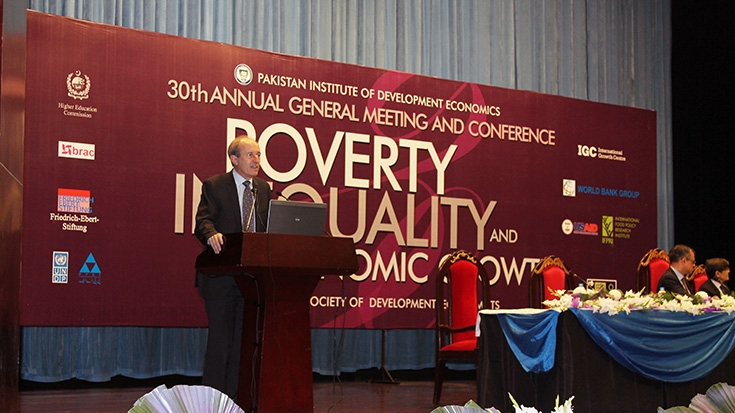“Well-being in life depends on opportunity in childhood, mobility in adulthood, and support throughout life,” said Martin. “Policies to address inequality should focus on ensuring equality of opportunity, improving upward mobility, and providing adequate support to mitigate shocks for the poorest.”
The report finds that despite not being the poorest region in the world, South Asia has some of the worst human development outcomes worldwide; and the comparison is even more dramatic when focusing on the outcomes of the poorest quintile. The share of children under five who are stunted among the poorest quintile is above 50 percent in Bangladesh and Nepal and reaches 60 percent in India. India and Pakistan also have some of the highest infant mortality rates and under-five child mortality rates among the poor across all comparators. Of 1,000 children born in Pakistan’s poorest population quintile, 94 will die within 12 months and 120 within five years.
Inequality matters not just in itself, but because of its impact – positive or negative – on other development outcomes, including the provision of public goods. Opportunity in childhood is characterized by adequate access to education, healthcare, and sanitation. Martin repeatedly stressed in his presentation that while education attainment has improved throughout the region, albeit of varying quality, access to sound healthcare and sanitation has been more uneven.
The report finds that the education level, location, and class of the parents have a great effect on the opportunity prospects of their children. In Pakistan teaching quality in public primary schools is far poorer in villages with the most land ownership inequality. Notably, this negative impact of inequality on teaching quality does not extend to private schools. These results imply that service quality and access tend to decline at very high levels of inequality, but mainly for services for which the wealthy can move to private providers — such as schools.
South Asian households are periodically exposed both to individual shocks and to economy-wide shocks, such as natural calamities, food price spikes, and armed conflict. Health related issues and calamities are the most common types of shocks in the region, affecting rural populations the most. In Pakistan, poorer and richer households rely on different coping strategies. Confronted with shocks, the poor more frequently reduce expenditures, including quantity and quality of food consumed; they are also more prone to borrow and sell agricultural assets whereas the rich can rely on savings and profits.
The report also highlights the fact that the quality of the support provided by government occupies an intermediate place. The South Asia region is home to some impressive social protection programs, like the Benazir Income Support Program in Pakistan which is remarkably well targeted to poorer households and has helped them become more resilient to natural disasters, but the report claims that tax avoidance and evasion are pervasive in the region and a large share of the tax revenue is spent on regressive subsidies. An unusually large fraction of the typically low government revenue is often devoted to reducing the final price of food, fertilizer, gas, and electricity which benefits the rich more than the poor.
The report claims that things need to change for South Asia to double its growth to 9%. Unless governments can raise more tax by broadening the base and spurring private sector development, South Asia will not end poverty and boost shared prosperity. The report’s launch was presided by Rachid Benmessaoud, World Bank Country Director for Pakistan. Dr. Anjum Nasim, Director IDEAS, and Dr. G.M Arif, Joint Director Graduate Institute of Development Studies made incisive comments as panelists. Academics, researchers, policymakers, civil society representatives, media and students attended the event.


